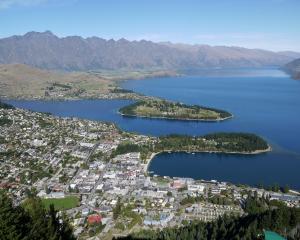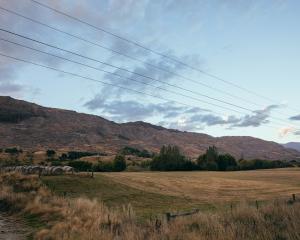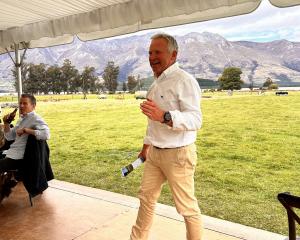Should farming activities or protection of indigenous vegetation take priority on a contentious piece of privately owned land at Hawea Flat?
That is the question the Environment Court will answer today, in a decision Judge John Hassan says is ''by no means an easy one''.
The ruling could have significant implications for the farming industry if an interim enforcement order issued against farmer Dougal Innes earlier this month is upheld, lawyer Graeme Todd submitted to the court in Queenstown yesterday.
The order was obtained by the Royal Forest and Bird Protection Society of New Zealand, which considers protecting the indigenous vegetation on Mr Innes' land a matter of ''national importance''.
Mr Innes had already disced a large part of the site before his farming activities were halted by the order, which he has applied to the court to have cancelled.
In closing submissions, Forest and Bird lawyer Sally Gepp said the consequences of Mr Innes not being able to cultivate his land this year should not override a clear breach of the district plan, the adverse effects already caused at the site and the further effects which would occur if the order was cancelled.
''Protection of significant indigenous vegetation is a matter of national importance which all decision-makers must recognise and provide for,'' Ms Gepp said.
The most appropriate forum for considering Mr Innes' proposed farming activity was a resource consent process where all parties could have a view on the matter through notification.
''[Mr Innes] is required to seek consent for indigenous vegetation clearance like any other person.''
It was ''not an ex-appropriation of his rights'', but rather a normal and legal application of the district plan.
Mr Todd, who is acting for neighbouring landowner and interested party James Cooper, said the significant question if the interim order was upheld was: which landowner in the district would be next?
''If farmers are required to spend thousands of dollars applying for resource consents for every act of clearance of their land and if their ability to cultivate and farm their land is curtailed by a standard that they are not allowed to clear pasture even if a few indigenous species are present on a site, this has significant implications for the farming industry not only in this region but in other regions.''
Mr Innes' lawyer, Jan Caunter, said Mr Innes had ''asked all of the right questions and sought advice from all the right places'' on matters relevant to buying the property and which might have affected his ability to use it.
''He sought LIM reports which did not alert him to the presence of indigenous vegetation on the site. It did, however, alert him to activities that had previously been approved on the site, which were in many respects similar to what he wished to do,'' Ms Caunter said.
''[He] received what essentially amounted to 'yes, you can go ahead'.''
Federated Farmers lawyer Richard Gardner said because the land had been used for primary production purposes for a long time and cultivated on occasion for those purposes, Mr Innes' claims to existing use rights were ''well founded''.
''There is no basis upon which the interim enforcement order can be sustained ... Mr Innes and the other farmers in the Queenstown Lakes district who are concerned about the implications of the interim enforcement order should be left to go about their lawful farming activities,'' Mr Gardner said.
Further consideration was given to a compromise, as mooted by Mr Todd on Wednesday.
Judge Hassan asked three ecologists - who were appearing for the council, Mr Innes and Forest and Bird - their view on an appropriate width for a possible buffer zone on the southern boundary of Mr Innes' property, to protect indigenous vegetation on neighbouring land owned by Contact Energy.
Their opinions ranged from 20m to 200m.












